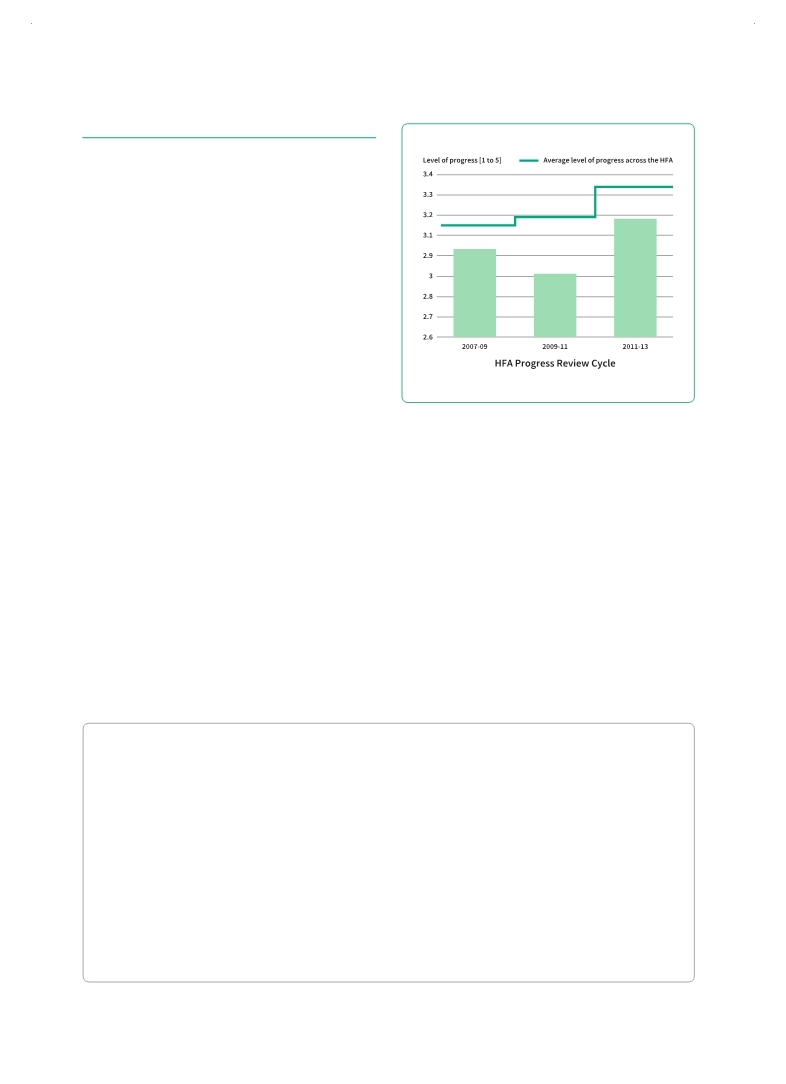 |
Global Assessment Report on Disaster Risk Reduction 2015
Making development sustainable: The future of disaster risk management |
 |
Global Assessment Report on Disaster Risk Reduction 2015
Making development sustainable: The future of disaster risk management |
|
|

190
Part III - Chapter 9
9.3 Addressing poverty and
inequality in the HFA?
There is evidence of success in reducing poverty and inequality. However, much of this progress has not originated in the disaster risk management sector per se, but instead has been driven by other sectors, notably agriculture, food and social welfare.
The HFA does not mention inequality as a driver of disaster risk. However, under Priority for Action 4, the HFA includes a number of activities aimed directly at reducing the vulnerability and strengthening the social resilience of households and communities (Box 9.3).
Although government self-assessment reports show an improvement in these areas between the 2011 and 2013 reporting cycles, they point to a very low overall level of achievement (Figure 9.5) which is well below the average score across the different priorities for action.
As in other HFA key activities, the absence of consistent output indicators makes it difficult to assess progress. However, there is evidence of improving food security in many regions and
increasing coverage of social protection. Much of this progress has not originated in the disaster risk management sector per se, but instead has been driven by other sectors, notably agriculture, food and social welfare.
HFA Core Indicator 4.2: Social development policies and plans implemented to reduce vulnerability of populations most at risk.
(Source: UNISDR with data from the HFA Monitor.)
Figure 9.5 Progress reported in integrating disaster risk reduction into social development
Box 9.3 Key activities related to social vulnerability and resilience in the HFA
(d) Promote food security as an important factor in ensuring the resilience of communities to hazards, particularly in areas prone to drought, flood, cyclones and other hazards that can weaken agriculture-based livelihoods.
(g) Strengthen the implementation of social safety-net mechanisms to assist the poor, the elderly and the disabled, and other populations affected by disasters. Enhance recovery schemes including psycho-social training programmes in order to mitigate the psychological damage of vulnerable populations, particularly children, in the aftermath of disasters. (i) Endeavor to ensure, as appropriate, that programmes for displaced persons do not increase risk and vulnerability to hazards. (j) Promote diversified income options for populations in high-risk areas to reduce their vulnerability to hazards, and ensure that their income and assets are not undermined by development policy and processes that increase their vulnerability to disasters. |
 
Page 1Page 10Page 20Page 30Page 40Page 50Page 60Page 70Page 80Page 90Page 100Page 110Page 120Page 130Page 140Page 150Page 160Page 170Page 180Page 181Page 182Page 183Page 184Page 185Page 186Page 187Page 188Page 189Page 190Page 191->Page 192Page 193Page 194Page 195Page 196Page 197Page 198Page 199Page 200Page 201Page 202Page 203Page 204Page 210Page 220Page 230Page 240Page 250Page 260Page 270Page 280Page 290Page 300Page 310
|
|
 
|
 
|
